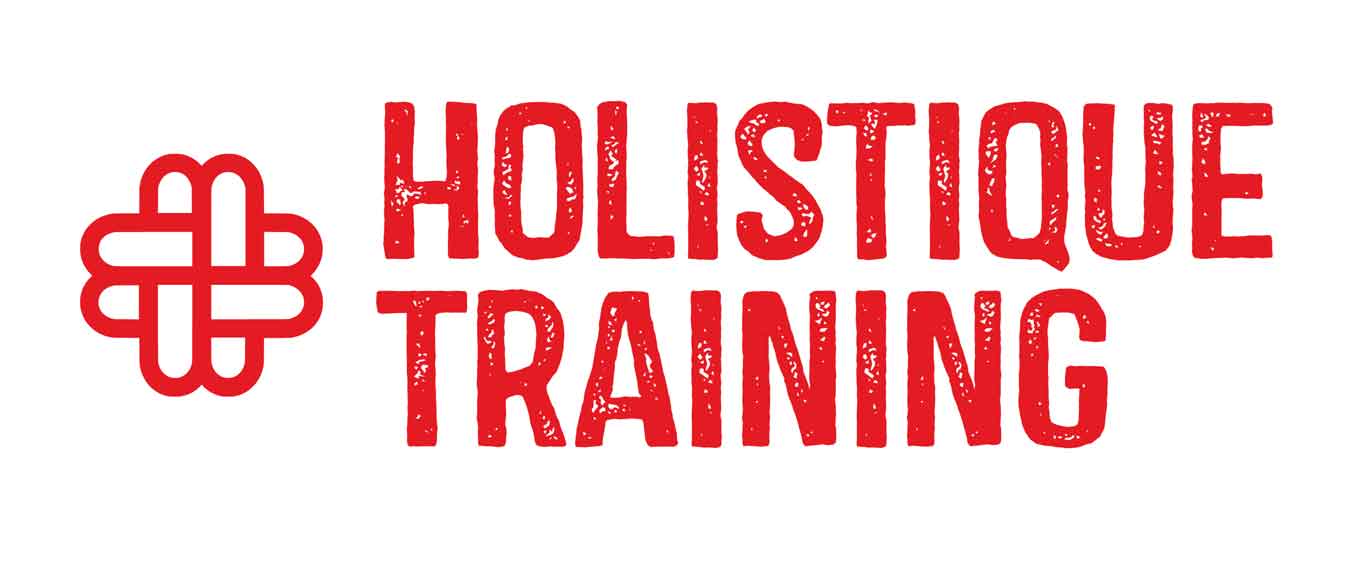- Table of Contents
- Introduction
- What is Hoshin Kanri?
- The 7 Steps of Hoshin Kanri Planning
- 1. Establish Organizational Vision
- 2. Develop Breakthrough Objectives
- 3. Set Annual Goals
- 4. Deploy Objectives to Departments
- 5. Implement & Execute Plans
- 6. Conduct Monthly & Quarterly Reviews
- 7. Conduct an Annual Review
- When to Use the Hoshin Kanri Method
- Pros and Cons of the Hoshin Kanri Method
- Pros of the Hoshin Kanri Method
- What is the Hoshin Kanri Matrix (or X-Matrix)?
- How to Read a Hoshin Kanri X-Matrix
- Why is the X-Matrix Important?
- 1. Establishes a Clear Link Between Strategy and Execution
- 2. Promotes Alignment Across All Levels of the Organization
- 3. Ensures Measurable Success with Data-Driven Decision-Making
- 4. Encourages a Culture of Accountability and Ownership
- 5. Provides a Structured Approach for Continuous Improvement
- 6. Facilitates Cross-Functional Collaboration
- 7. Helps Prioritize the Most Impactful Initiatives
- 8. Enables Better Communication and Transparency
- How to Apply the X-Matrix
- 1. Define the Breakthrough Objectives (Long-Term Goals)
- 2. Set Annual Objectives Linked to Breakthrough Goals
- 3. Identify Key Improvement Initiatives (Strategic Projects)
- 4. Define Metrics and KPIs to Measure Success
- 5. Assign Responsibility and Ownership
- 6. Establish a Review and Adjustment Process
- 7. Communicate and Align Teams on the Strategy
- 8. Foster a Culture of Continuous Improvement
- Hoshin Kanri vs. Balanced Scorecard
- Conclusion
Introduction
Strategic planning is the backbone of any successful organization. Yet, many businesses struggle with execution, often setting ambitious goals but failing to translate them into actionable plans. This is where Hoshin Kanri and its X-Matrix come into play. These tools offer a structured, visual method for aligning long-term objectives with daily activities, ensuring that strategic goals drive decision-making at all levels.
This blog post explores the Hoshin Kanri X-Matrix, its purpose, how to use it, and how it compares to other strategic tools like the Balanced Scorecard. By the end, you'll have a comprehensive understanding of how to implement this method effectively.
What is Hoshin Kanri?
Hoshin Kanri, often called Policy Deployment, is a strategic planning methodology originating from Japan. The term combines two Japanese words:
- Hoshin (方針) – meaning "direction" or "policy."
- Kanri (管理) – meaning "management" or "control."
Together, Hoshin Kanri translates to "policy management", emphasizing the alignment of an organization’s vision with its execution strategy. This approach ensures that strategic goals are communicated, understood, and acted upon at all levels of the organization.
The Hoshin Kanri methodology enables businesses to:
- Define clear, measurable objectives.
- Align company-wide efforts with strategic goals.
- Encourage continuous improvement (Kaizen).
- Create accountability within teams.
The 7 Steps of Hoshin Kanri Planning
Implementing Hoshin Kanri involves seven key steps that help organizations establish, execute, and refine their strategies.
1. Establish Organizational Vision
The first step in the Hoshin Kanri process is to define a clear and compelling organizational vision. This vision serves as a guiding light, helping leaders and employees understand the company’s long-term aspirations. It typically spans three to five years and should address fundamental questions such as:
- Where does the organization want to be in the future?
- What are the key areas of focus to ensure sustainable growth?
- What major challenges must be overcome to achieve this vision?
Leadership teams must ensure that the vision aligns with market trends, customer needs, and internal capabilities. This step is critical because it forms the foundation for all subsequent planning efforts.
2. Develop Breakthrough Objectives
Once the vision is in place, the next step is to set breakthrough objectives—high-impact goals that will drive significant progress toward achieving the vision. These objectives usually have a one- to three-year timeline and require fundamental changes within the organization.
Breakthrough objectives should be:
- Bold and ambitious, yet achievable.
- Quantifiable, with measurable targets.
- Focused on areas that provide a competitive advantage.
For example, if an organization aims to become a leader in sustainable manufacturing, a breakthrough objective could be to reduce carbon emissions by 40% within three years. These objectives guide the company’s strategic efforts, ensuring that all initiatives contribute to meaningful change.
3. Set Annual Goals
With breakthrough objectives in place, leadership must break them down into specific annual goals. These are actionable targets that ensure steady progress toward long-term objectives.
Annual goals should follow the SMART criteria (Specific, Measurable, Achievable, Relevant, Time-bound) to ensure clarity and focus. For example, if the breakthrough objective is a 40% reduction in carbon emissions, an annual goal might be to cut emissions by 15% within the first year through improved energy efficiency and waste reduction programs.
By setting achievable yet challenging goals for each year, organizations maintain momentum and ensure that long-term objectives remain realistic.
4. Deploy Objectives to Departments
A key principle of Hoshin Kanri is goal alignment across all levels of the organization. In this step, annual goals are cascaded down to different departments, ensuring that every team and employee understands their role in the broader strategy.
This step requires:
- Clear communication of objectives.
- Involvement of department heads in setting relevant sub-goals.
- Ensuring that cross-functional teams work toward shared outcomes.
For example, if the annual goal is a15% reduction in emissions, different departments may contribute in unique ways:
- The manufacturing team could focus on reducing waste and optimizing energy use.
- The logistics team could implement more efficient transportation methods.
- The HR department could develop sustainability training programs for employees.
By aligning efforts across departments, organizations ensure that every level of the company contributes to achieving strategic goals.
5. Implement & Execute Plans
With objectives distributed across departments, the focus shifts to execution. This step involves:
- Allocating resources to key initiatives.
- Defining timelines and responsibilities.
- Establishing a structured review process.
A common approach used in Hoshin Kanri execution is the PDCA (Plan-Do-Check-Act) cycle:
- Plan: Develop detailed action plans for each initiative.
- Do: Implement the plans and monitor progress.
- Check: Evaluate results against established KPIs.
- Act: Make necessary adjustments and improvements.
By systematically following the PDCA cycle, organizations ensure that execution remains flexible and adaptable, allowing for continuous improvement.
6. Conduct Monthly & Quarterly Reviews
Frequent reviews are essential to keeping strategic initiatives on track. Organizations typically conduct monthly and quarterly check-ins to assess progress, identify challenges, and make course corrections.
During these reviews, teams analyze performance metrics and address key questions such as:
- Are we meeting our short-term targets?
- What obstacles are preventing progress?
- Do we need to adjust our approach to stay aligned with the broader strategy?
This process fosters a culture of accountability, ensuring that issues are addressed proactively rather than at the end of the year.
7. Conduct an Annual Review
At the end of the year, organizations conduct a comprehensive review to assess whether the set objectives were achieved. This step involves:
- Evaluating overall performance against annual goals
- Identifying successful strategies and areas for improvement
- Refining objectives and strategies for the next cycle
Annual reviews also provide an opportunity to celebrate achievements and recognize employees' contributions. The insights gained from this step inform the next planning cycle, ensuring that strategies evolve based on real-world results and organizational learning.
Theseven steps of Hoshin Kanri provide a structured approach to strategic planning and execution. By following this process, organizations can align their workforce with long-term objectives, improve operational efficiency, and drive continuous improvement. This disciplined approach ensures that strategic goals are not just set, but actively pursued and achieved at all levels of the organization
When to Use the Hoshin Kanri Method
Hoshin Kanri is particularly effective for organizations that:
- Need long-term strategic alignment across multiple levels.
- Struggle with strategy execution despite having clear goals.
- Operate in fast-changing industries where adaptability is crucial.
- Want to foster a culture of continuous improvement and accountability.
It is commonly used in manufacturing, healthcare, finance, and technology, though it can be applied in virtually any industry.
Pros and Cons of the Hoshin Kanri Method
Pros of the Hoshin Kanri Method
1. Strategic Alignment Across All Levels
One of the biggest advantages of Hoshin Kanri is its ability to align organizational strategy with departmental and individual efforts. Many organizations struggle with a disconnect between high-level vision and day-to-day operations. Hoshin Kanri ensures that long-term objectives are clearly communicated and broken down into actionable goals that every employee understands and contributes to.
For example, if a company’s strategic goal is to improve customer satisfaction, this is translated into specific, measurable initiatives across departments, from product development to customer service. This level of alignment prevents miscommunication and ensures everyone is working toward the same overarching objectives.
2. Encourages Long-Term Thinking
Unlike traditional goal-setting methods that focus on short-term targets, Hoshin Kanri emphasizes long-term success. The method helps organizations set breakthrough objectives that span multiple years, ensuring sustained growth and continuous improvement.
This forward-looking approach is particularly useful in industries that require innovation and transformation, such as manufacturing, healthcare, and technology. It ensures that companies do not get caught up in reactive decision-making but instead focus on proactive, strategic initiatives.
3. Data-Driven Decision-Making
Hoshin Kanri is built on the principle of fact-based management. Goals and progress are continuously tracked using Key Performance Indicators (KPIs), ensuring that decisions are based on measurable data rather than assumptions.
This structured approach minimizes inefficiencies and helps organizations:
- Identify bottlenecks in processes
- Adjust strategies based on real-time data
- Measure success objectively
By relying on data rather than intuition, companies can make more informed, accurate decisions that drive measurable improvements.
4. Encourages Employee Involvement and Ownership
A key principle of Hoshin Kanri is engaging employees at all levels in the goal-setting and execution process. Rather than management dictating strategies from the top, employees are actively involved in defining how their roles contribute to the company’s success.
This sense of ownership leads to:
- Higher motivation and accountability
- Increased job satisfaction
- A stronger organizational culture of continuous improvement
When employees understand how their work ties into broader strategic objectives, they become more invested in the company’s success.
5. Ensures a Systematic Approach to Continuous Improvement
Hoshin Kanri integrates well with Lean and Six Sigma methodologies, making it an ideal tool for organizations focused on continuous improvement. By using structured frameworks like the PDCA (Plan-Do-Check-Act) cycle, companies can constantly refine their processes and strategies to adapt to changing market conditions.
This ability to continuously improve and optimize ensures that businesses remain competitive and agile in dynamic industries.
Cons of the Hoshin Kanri Method
1. Requires Strong Leadership Commitment
For Hoshin Kanri to be effective, it requires full commitment from top leadership. Since the method involves a structured, disciplined approach to planning and execution, leaders must be:
- Actively engaged in the goal-setting process
- Willing to allocate sufficient time and resources
- Dedicated to regular reviews and strategic adjustments
If leadership does not fully embrace and support the methodology, implementation can become inconsistent, leading to misalignment and poor results.
2. Can Be Time-Consuming to Implement
Unlike more flexible planning approaches, Hoshin Kanri requires extensive upfront planning and ongoing monitoring. The process of defining breakthrough objectives, setting annual goals, deploying them across departments, and conducting regular reviews can be complex and resource-intensive.
For organizations unfamiliar with structured strategic planning, adopting Hoshin Kanri may feel overwhelming at first. It often requires training, cultural adjustments, and strong project management to ensure a smooth rollout.
3. Complexity in Large Organizations
While Hoshin Kanri works well for many businesses, large enterprises with multiple divisions and global operations may find the method challenging to implement. Ensuring consistent execution across different departments and regions can be difficult, especially if teams have varying levels of engagement or different performance metrics.
To overcome this, large organizations often customize the framework and use software tools to track progress and maintain alignment. However, this adds an additional layer of complexity that smaller organizations may not have to deal with.
4. Resistance to Change
Like any structured methodology, Hoshin Kanri requires a shift in organizational mindset, which can lead to resistance from employees and middle managers. Some common concerns include:
- Fear of increased accountability and oversight
- Difficulty adapting to a new planning process
- Skepticism about whether the method will truly drive results
To address these challenges, companies must focus on change management strategies, such as clear communication, training, and gradual implementation, to gain buy-in from all levels of the organization.
5. Requires Regular Reviews and Adjustments
One of the strengths of Hoshin Kanri is its structured review process, but this can also be a drawback if organizations fail to consistently monitor progress. Without regular reviews, the method loses effectiveness, and goals can quickly become outdated or misaligned.
To maintain momentum, companies must:
- Conduct monthly and quarterly performance reviews
- Adjust goals and strategies based on data-driven insights
- Ensure that leadership remains actively involved in the process
If these regular reviews are neglected, organizations risk falling back into traditional, siloed decision-making, undermining the benefits of Hoshin Kanri.
Hoshin Kanri is a powerful strategic planning tool that helps organizations align their vision, objectives, and execution processes. It fosters long-term thinking, data-driven decision-making, and employee engagement, making it ideal for companies focused on continuous improvement.
However, it is not a one-size-fits-all solution. Organizations must be prepared for a structured, disciplined approach, invest in strong leadership commitment, and over come initial resistance to change. When implemented correctly, the benefits far outweigh the challenges, making Hoshin Kanri an effective framework for sustained business success.
What is the Hoshin Kanri Matrix (or X-Matrix)?
TheX-Matrix is a visual tool that helps organizations document and track theirHoshin Kanri plan. It provides a structured format for aligninglong-term vision, strategic objectives, annual goals, and key performance indicators.
The X-Matrix is commonly used by:
- Executives and senior leaders for strategic planning.
- Middle managers to translate high-level goals into departmental initiatives.
- Team leaders and employees to track progress and measure success.
How to Read a Hoshin Kanri X-Matrix
The X-Matrix is structured with four quadrants:
- Bottom Quadrant (Strategic Goals) – Defines long-term breakthrough objectives.
- Left Quadrant (Annual Goals) – Breaks strategic goals into specific, measurable targets for the year.
- Top Quadrant (Key Initiatives) – Details the projects and actions required to achieve annual goals.
- Right Quadrant (Metrics & Owners) – Outlines KPIs and assigns accountability.
Lines connecting different quadrants show the relationships between goals, initiatives, and performance measures.
Source:Kaizen Institute
Why is the X-Matrix Important?
TheHoshin Kanri X-Matrix is a critical tool for organizations that want toconnect their strategic vision to specific actions while ensuring alignment across all levels. It serves as avisual representation of an organization’s strategic plan, allowing teams to see how high-level objectives translate into measurable targets, key initiatives, and individual accountability. Here’s why the X-Matrix is so important in strategic planning and execution.
1. Establishes a Clear Link Between Strategy and Execution
One of the biggest challenges organizations face is thegap between strategy and execution. Leadership often defines ambitious goals, but those objectives can become lost when translated into daily operations. The X-Matrixbridges this gap by visually mapping out:
- Breakthrough objectives (long-term strategic goals).
- Annual objectives (shorter-term goals to achieve breakthroughs).
- Key initiatives (major projects and efforts needed to reach objectives).
- Metrics and responsibilities (how success will be measured and who is accountable).
By using the X-Matrix, organizationsensure that strategic goals are not just words on a document but are actively connected to real, actionable steps that employees at all levels can contribute to.
2. Promotes Alignment Across All Levels of the Organization
For a strategy to be successful, everyone in the organization must be moving in the same direction. The X-Matrix ensures alignment by clearly defining:
- What needs to be achieved (long-term and annual objectives).
- How it will be achieved (key initiatives and improvement projects).
- Who is responsible (teams and individuals accountable for execution).
This level of transparency reducesmiscommunication, redundancy, and conflicting priorities, creating a structured approach where every department and team understands their role in achieving the company's vision.
For example, if a company's breakthrough objective is toincrease customer satisfaction by 30% within three years, the X-Matrix helps define what each department (customer service, product development, marketing, etc.) must do to contribute to this goal. Thisensures cross-functional collaboration and accountability, preventing teams from working in silos.
3. Ensures Measurable Success with Data-Driven Decision-Making
Unlike traditional goal-setting approaches that rely on vague aspirations, the X-Matrix tiesevery objective and initiative to measurable key performance indicators (KPIs). This is crucial fortracking progress, identifying bottlenecks, and making data-driven adjustments.
For example, an objective to improve operational efficiency could be linked to KPIs such as:
- Reduction in production cycle time by20%
- Increase in on-time deliveries by15%
- Reduction in product defects by10%
By integrating these metrics into the X-Matrix, organizations cancontinuously monitor their progress and make strategic adjustments as needed, ensuring that efforts remain aligned with overarching business goals.
4. Encourages a Culture of Accountability and Ownership
One of the standout features of the X-Matrix is its ability toclearly assign ownership to different parts of the strategy. Every initiative and objective is connected tospecific individuals or teams responsible for execution. This fosters a sense ofaccountability because:
- Employees understand how their work contributes to the company’s success.
- There isclarity on who is responsible for each key initiative.
- Managers and leaders cantrack progress and provide support where needed.
This preventsblame-shifting and ensures that every aspect of the strategic plan has someone actively driving it forward.
5. Provides a Structured Approach for Continuous Improvement
The X-Matrix doesn’t just help withsetting goals—it also plays a key role incontinuous improvement. By integrating principles fromLean andSix Sigma, the X-Matrix encourages organizations to:
- Regularly review their progress against strategic goals.
- Identify areas where adjustments are needed.
- Refine processes and strategies based on real-world data.
Organizations using the X-Matrix often adopt aPlan-Do-Check-Act (PDCA) cycle, where they continuously evaluate and improve their strategic initiatives. This keeps the strategy dynamic and adaptable rather than rigid and outdated.
6. Facilitates Cross-Functional Collaboration
Many strategic initiativesrequire multiple departments to work together, but coordinating across teams can be a challenge. The X-Matrix promotescross-functional collaboration by visually linking objectives and initiatives across different business functions.
For instance, if a company’s goal is toreduce product defects by 10%, this might involve:
- The manufacturing team improving quality control processes.
- The R&D team refining product design.
- The procurement team sourcing higher-quality materials.
- The customer service team collecting and analyzing defect-related feedback.
By mapping out these interdependencies in the X-Matrix, organizations canensure that teams work together efficiently rather than operating in isolated silos.
7. Helps Prioritize the Most Impactful Initiatives
Not all projects and initiatives have the same level of impact. One of the strengths of the X-Matrix is that it helps organizationsprioritize high-impact activities that directly contribute to strategic goals.
Without a structured tool like the X-Matrix, organizations often struggle with:
- Too many competing initiatives that dilute focus
- Resources being spread too thin across multiple projects
- Unclear priorities, leading to confusion and inefficiency
By visually linking initiatives to breakthrough objectives, the X-Matrix helps leadership teamsfocus on what truly matters and allocate resources where they will have the greatest impact.
8. Enables Better Communication and Transparency
Communication breakdowns are a common cause of strategic failure. The X-Matrix acts as asingle source of truth that allows all stakeholders to see the organization's strategic plan at a glance.
- Executives can track high-level progress and adjust strategies as needed
- Managers can see how their teams contribute to larger objectives
- Employees can understand their role in achieving company-wide goals
This transparencyreduces confusion, improves collaboration, and builds trust across the organization, making it easier to drive strategy forward.
TheHoshin Kanri X-Matrix is more than just a planning tool—it is aframework for executing strategy with precision, alignment, and accountability. It ensures that long-term goals aretranslated into actionable steps, fosters cross-functional collaboration, and enables organizations totrack progress using real data.
By implementing the X-Matrix effectively, organizations can:
- Align theirstrategy with execution
- Improvecross-team coordination
- Enhanceaccountability and ownership
- Prioritizehigh-impact initiatives
- Foster aculture of continuous improvement
For companies committed tostructured, data-driven strategic execution, the X-Matrix is an invaluable tool that turnsbig-picture visions into measurable success.
How to Apply the X-Matrix
Applying theHoshin Kanri X-Matrix effectively requires a structured approach to ensure that strategic goals are properly translated into actionable initiatives. The matrix serves as avisual framework to align long-term objectives with specific targets, initiatives, and responsible teams. Here’s how organizations can successfully implement the X-Matrix step by step.
1. Define the Breakthrough Objectives (Long-Term Goals)
The first step in applying the X-Matrix is toidentify the breakthrough objectives—these are the major strategic goals the organization wants to achieve within a specific time frame (often three to five years).
To define strong breakthrough objectives, organizations should:
- Focus ontransformational changes rather than incremental improvements.
- Ensure they align with the company’smission, vision, and core values.
- Limit the number of breakthrough objectives (typically 3–5) tomaintain focus.
For instance, if a company aims tobecome the industry leader in product innovation, that would be a breakthrough objective. Once these objectives are established, they are placed at thebottom section of the X-Matrix.
2. Set Annual Objectives Linked to Breakthrough Goals
Once long-term goals are defined, organizations must break them down intoachievable annual objectives. These objectives serve asmilestones that contribute to achieving the breakthrough objectives.
When defining annual objectives:
- Usespecific, measurable, and time-bound goals (e.g., increase customer retention by 15% in one year).
- Ensure they are realistic yet ambitious to drive meaningful progress.
- Align them with the overall strategic direction of the company.
Annual objectives are placed on the left side of the X-Matrix, showing how they support the breakthrough goals.
3. Identify Key Improvement Initiatives (Strategic Projects)
With annual objectives in place, the next step is to determine the key initiatives required to achieve them. These initiatives are concrete projects or process improvements that will drive progress toward the set goals.
To select the right initiatives:
- Focus on high-impact actions that will drive measurable results.
- Align initiatives across different functions and departments.
- Ensure they are manageable and within the organization’s capacity.
These initiatives are positioned at the top section of the X-Matrix, where they are linked to the annual objectives they support.
4. Define Metrics and KPIs to Measure Success
Every strategic initiative must be supported by quantifiable performance metrics to track progress. These key performance indicators (KPIs) ensure that teams stay focused and accountable.
When setting KPIs:
- Choose leading and lagging indicators to measure progress effectively.
- Ensure KPIs are actionable and tied directly to specific initiatives.
- Establish a system for regular performance tracking and reporting.
KPIs are placed on the right side of the X-Matrix, showing how success will be measured for each initiative.
Example KPIs when applying the X-Matrix:
Category | Example KPIs | Purpose |
Customer Metrics | - Customer retention rate - Net Promoter Score (NPS) - Customer acquisition cost (CAC) | Measure customer satisfaction, loyalty, and acquisition efficiency |
Financial Metrics | - Revenue growth - Profit margin - Return on investment (ROI) | Track the financial impact of initiatives and overall business performance |
Operational Metrics | - Cycle time reduction - On-time delivery percentage - First-pass yield | Assess internal efficiency and process improvements |
Employee Metrics | - Employee engagement score - Training completion rate - Attrition rate | Evaluate team satisfaction, development, and retention |
Project Metrics | - Percentage of milestones achieved - Budget variance - Project completion rate | Monitor the progress and success of specific strategic initiatives |
5. Assign Responsibility and Ownership
Accountability is a key factor in executing a strategic plan successfully. The X-Matrix helps organizations assign clear ownership for each initiative, ensuring that every strategic action has a responsible person or team.
To effectively assign responsibility:
- Design ateowners for each initiative—these can be individuals, teams, or departments.
- Clearly define roles and expectations to prevent misalignment.
- Encourage cross-functional collaboration where multiple teams contribute to initiatives.
Ownership is visually represented in the X-Matrix by linking specific teams or leaders to initiatives and objectives. This ensures clarity on who is responsible for driving each initiative forward.
6. Establish a Review and Adjustment Process
Applying the X-Matrix is not a one-time exercise—it requires continuous monitoring, review, and adjustments. Organizations must implement a structured approach for tracking progress and making necessary changes to stay on course.
To ensure effective review and adjustments:
- Conduct monthly or quarterly strategy reviews to assess progress.
- Analyze performance metrics and adjust initiatives as needed.
- Encourage feedback from teams to refine strategies.
- Use the Plan-Do-Check-Act (PDCA) cycle for continuous improvement.
By making regular adjustments based on data and feedback, organizations stay agile and responsive to changing business conditions.
7. Communicate and Align Teams on the Strategy
For the X-Matrix to be effective, everyone in the organization needs to understand the strategy and their role in executing it. Clear communication and engagement across teams ensure alignment and commitment.
To enhance communication and alignment:
- Hold strategy deployment meetings to explain the X-Matrix and its purpose.
- Provide training and resources to help employees understand how their work contributes to the bigger picture.
- Use visual management tools (such as dashboards) to make the strategy accessible to all levels of the organization.
When teams clearly understand their role in executing the strategy, they are more likely to be engaged and motivated to achieve the defined objectives.
8. Foster a Culture of Continuous Improvement
Successful implementation of the X-Matrix requires a mindset of continuous improvement. Organizations should encourage teams to reflect on performance, identify challenges, and propose solutions for improvement.
To build a culture of continuous improvement:
- Encourage teams to regularly assess their progress and find opportunities for enhancement.
- Promote cross-functional collaboration to share best practices.
- Recognize and reward teams for their contributions to strategic success.
By embedding continuous improvement into the organization’s culture, the X-Matrix remains a dynamic and effective tool for long-term strategic execution.
Applying the Hoshin Kanri X-Matrix requires a disciplined, structured approach to ensure that strategy translates into real, measurable results. By following these steps—defining objectives, setting initiatives, assigning ownership, tracking progress, and making continuous improvements—organizations can successfully implement the X-Matrix as a powerful strategic planning and execution tool.
You can download a free X-matrix (Excel version) here.
Hoshin Kanri vs. Balanced Scorecard
While both Hoshin Kanri and the Balanced Scorecard focus on strategic alignment, they differ in approach:
Feature | Hoshin Kanri | Balanced Scorecard |
Purpose | Strategic execution and goal alignment | Performance measurement and strategy evaluation |
Structure | X-Matrix | Four perspectives (Financial, Customer, Internal Processes, Learning & Growth) |
Focus | Long-term vision and execution | Balanced measurement of organizational performance |
Best For | Organizations needing structured goal deployment | Companies focusing on tracking performance across multiple dimensions |
Conclusion
The Hoshin Kanri X-Matrix is more than just a planning tool—it’s a structured framework that transforms ambitious goals into actionable, measurable objectives. By bridging the gap between strategy and execution, it ensures that every initiative is aligned with the company’s long-term vision. This method not only improves focus but also fosters a culture of accountability, collaboration, and continuous improvement.
For organizations struggling to execute their strategy effectively, adopting the X-Matrix can be a game changer. It helps leaders and teams stay aligned, ensures resources are allocated efficiently, and makes progress toward key objectives visible and trackable. Whether used alone or alongside other methodologies like the Balanced Scorecard, the X-Matrix provides the clarity needed to drive long-term business success.
Implementing strategic tools like the Hoshin Kanri X-Matrix requires a deep understanding of goal setting, execution planning, and performance tracking. If you’re ready to take your strategic planning to the next level, our course Powerful Strategic Tools to Ensure Business Focus is designed to help you master effective strategy implementation. You’ll learn how to align teams, track progress, and drive meaningful results using industry-proven frameworks.
Start today and transform the way your organization executes strategy!

























